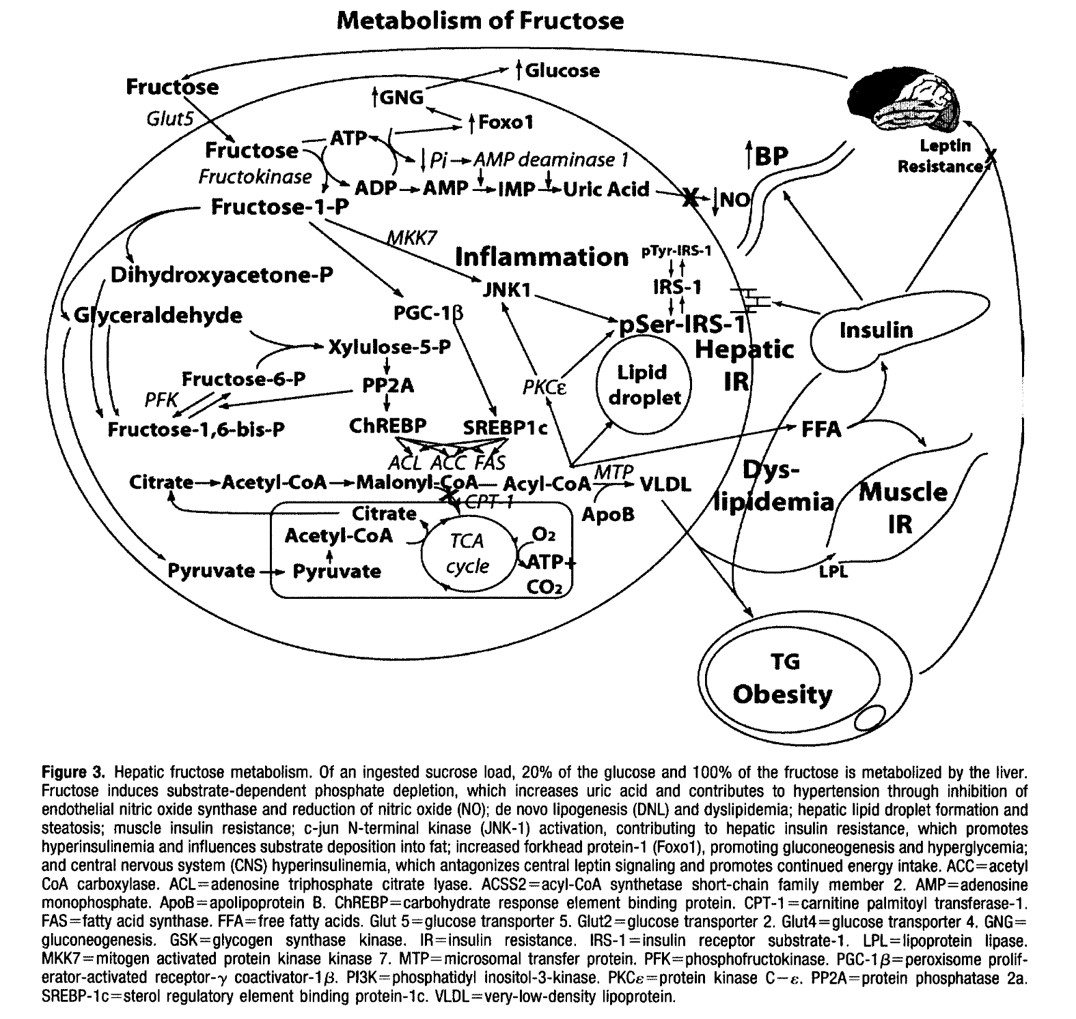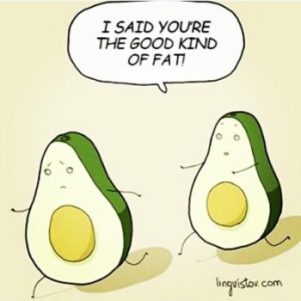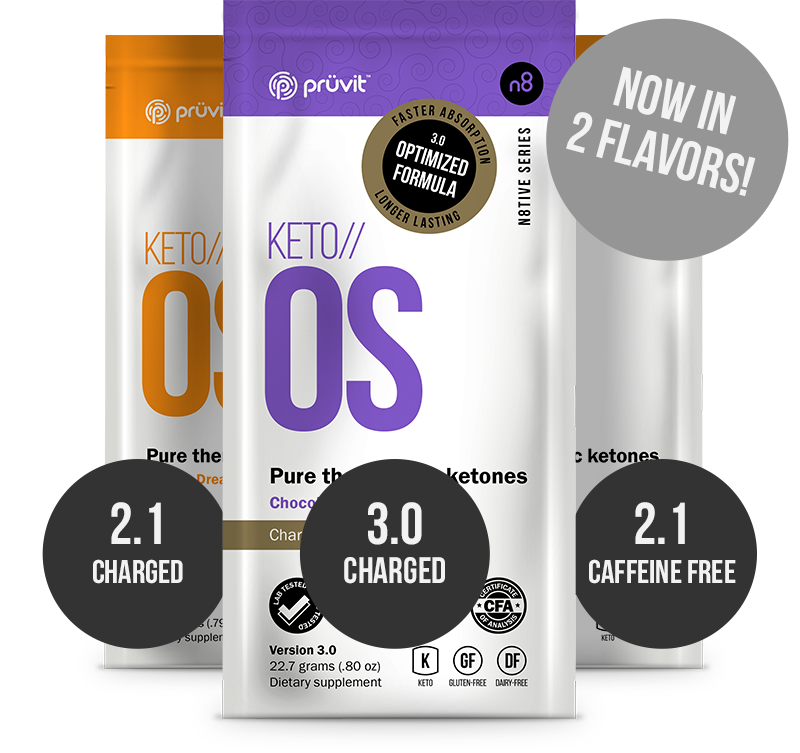Exogenous ketones are now available for purchase North of the border and our wonderful Canadian friends can now access them via the internet at: DynamicKetones.com.
Category: Ketogenic Lifestyle
Why Fruit & Fruit Smoothies Kick You Out of Ketosis!
Podcast #32: Hereditary Angioedema, Lower Blood Ketones, Statins, Healthy Keto Lifestyle

Listen to KetoTalk Podcast #32 where we talk about hereditary angio-edema, adequate ketone ranges, statin use while in ketosis and healthy keto questions. You can listen in by going to KetoTalk.com or you can listen in on iTunes.

“About 40 percent of my older patient population who take statins while eating ketogenic experience some form of myalgia they didn’t have before. And there’s an amplified side effect profile: muscle ache, joint pain, generalized fatigue, liver enzyme elevation, and cloudy headed.” — Dr. Adam Nally
Ketogenic BioHacking Workshop – Online
How does a ketogenic diet work?
How can it help my metabolism?
What actually occurs in your metabolism when you become a fat burning machine?
How does functioning off of ketones aid and improve disease?
Join Dr.Nally online, via Webex, and learn how to optimize your body and your metabolism.
Ketogenic BioHacking with Dr. Adam Nally
Date: Wednesday, August 24, 2016
Time: 6:00 pm, Mountain Time (Arizona, GMT-07:00)
Session Number: 801 629 053
Registration password: Ketones
——————————————————-
To register for this training session click here:
——————————————————-
PLEASE NOTE: Registration for this even must be done on a computer. Once registered, the WebEx Workshop can be viewed on a computer, iPhone or iPad with.
Once you are approved by the host, you will receive a confirmation email with instructions for joining the session.
To view in other time zones or languages, please click the link here.
Bacon Can't Solve All Your Problems . . .


Calculating Protein Needs for Your Ideal Body Weight
Too much protein, too little protein? How do you know how much protein to eat? This has become a very confusion question for many of my patients in recent years. There a a large amount of “mis-information” in the ketogenic world about the effect of protein of gaining and losing fat.

For the person exercising 5-6 days a week, 1 gram of protein per pound of ideal body weight is the formula that works quite well. However, for the average Joe or Mary who doesn’t work out for an hour a day 5 days a week, I’ve provided the calculation below. This calculation is a baseline starting point. It is the basic amount of needed protein to maintain muscle on a ketogenic or carnivorous diet:
Males: Protein in g/day of IBW = 50 g (for the first 5 feet of height) + 2.3 g for each inch over 5 feet. Then multiply the number you found by 1.2 (multiplier for sedentary male). [This lets you calculate the average male needs that are approximately 1.2 g of protein per kg of ideal body weight (IBW) per day.]
Skinny on Sweeteners in 13 Minutes
I am frequently asked about the sweeteners that can be used with a low carbohydrate diet. There are a number of sweeteners available that are used in “LowCarb” pre-processed foods like shakes or bars, or in cooking as alternatives to sugar. However, most of them
 raise insulin levels without raising blood sugar and are not appropriate for use with a true low-carbohydrate/ketogenic diet. You can see and print the article I published clarifying which sweeteners you can use and which ones to avoid here:
raise insulin levels without raising blood sugar and are not appropriate for use with a true low-carbohydrate/ketogenic diet. You can see and print the article I published clarifying which sweeteners you can use and which ones to avoid here:
Of recent note, I’ve been asked about the insulin response that occurs in the study found here quoted by Dr. Jason Fung in his wonderful book, The Obesity Code.
First, it is essential to note that both the crystalline form of Stevia and the aspartame used in the form of Equal, also a crystal, contain either dextrose or malto-dextrin as the crystallizing agent. Both dextrose and malto-dextrin have a known insulin spike equal to table sugar. You can see that in my article link above. Watch the video and we’ll discuss which forms of Stevia and aspartame don’t raise insulin in myself or my patients.
Aspartame has been effective in appetite suppression in many obesity patients clinically. However, recent studies have demonstrated that aspartame does have a negative effect on gut flora, has potential to cause insulin resistance to persist when used long term (seen in animal studies) and has been shown to damage the mitochondria of brain cells (also animal studies). I now caution my patients with its use. We will keep a very close eye on all these sweeteners.
Men's Hearts Failing Them for Fear
I am always fascinate when religious or spiritual topics collide with medical evidences and/or disease. I am convinced that “the natural man” has trouble recognizing that all things are spiritual unto God (1 Corinthians 2:14). Unfortunately, training in medicine often attempts to “educate the spirituality out of you.”
However, this week,and in church today, I’ve been reading about “signs of the times.” Of interest, and something that I’ve been pondering, is the statement made in Luke 21:25-26 where the Savior, Jesus Christ, specifically foretells the signs of His Second Coming. Among the perplexities and distress outlined, one statement stands out this week and has been the food of much thought, “Men’s hears failing them for fear,…” (Luke 21:26).

This food for thought is actually what directed me to this verse, as I’ve had a number of people express notable fear and worry over whether their diet is correct, because so much miss-information abounds in society today. Argument, stress and fear over diet, apparently, is not new and was something that even Paul noticed and wrote about in his Epistle to the Romans (Romans 14:1-3).
Stress and fear are two of the biggest hindrances to health and weight loss in my office. The most common non-food cause of failing to maintain ketosis while living a ketogenic lifestyle is stress. Stress is often due to fear. Men, and women alike, become fearful because they seem to:
- Forget their Purpose
- Forget their Identity
When heartache arise from illness, injury, disability, death, divorce, wayward children and the other innumerable causes, stress and fear abound. Worry about diet and health, in a time when so much contradictory advise is at our fingertips, adds to that fear.
 When we forget our purpose and our identity, three symptoms arise both physically and spiritually:
When we forget our purpose and our identity, three symptoms arise both physically and spiritually:
- Apathy toward some or all parts of life (“It’s just going to change again so why even care . . ?”)
- A mental slumber due to temporal or carnal pacification (“I can just eat and/or drink my problems away”)
- Fear of change and the pain or effort it may take to make a change (“I don’t have the will-power to change anymore.”)
The scriptures call this “weak hands & feeble knees” (Isaiah 35:3), and we in medicine refer to this as dysthymia, the first step in progression toward chronic depression and/or anxiety.
These symptoms all increase chronic levels of cortisol and  insulin. Amplified “brain fog,” weight gain, and inflammation are physical responses to the mental fear that is chronically unresolved. These symptoms just add to the apathy, mental slumber and fear of pain that was already present.
insulin. Amplified “brain fog,” weight gain, and inflammation are physical responses to the mental fear that is chronically unresolved. These symptoms just add to the apathy, mental slumber and fear of pain that was already present.
The problem is that over time, this progressive triad lead down the hormonal path to what we now call atherosclerosis, narrowing of the blood vessels, increasing the risk for heart attack, heart failure and stroke. This was seen in Hippocrates day as “sudden death related to episodes of chest distress” (Leibowitz, 1970). The Italian anatomist Giovanni Morgagni (1682-1771) described it in his day as “the force of the heart decreases so much more in proportion as the greater number of its parts becomes tendonous instead of being fleshy.”
SO, WHAT DOES ONE DO?
First, realize that the problems you are facing have been faced by millions of human beings and you are not alone. But, to paraphrase Irene Dunne, if you don’t stand for something, you will fall for anything.
I no longer believe in coincidence. Whether you have thought about it or not, every interaction you have with others (even our interaction . . . your reading this blog), are not by coincidence. There is a reason. Whether you believe it or not, everything around us testifies that God exists; the Hand of Providence can be seen from the rotation of the earth, planets and stars, the precision of the seasons, the balance of the atmosphere allowing for the perfect pressures and concentration of elements to sustain a life giving breath, to the perfect replication of DNA within billions of cells throughout the body.
I’m not trying to get religious, and, no, I can’t prove this through the scientific method . . . But, that is just the point. Hands are weak because of lack of faith. Faith is the substance of things hoped for, the evidences of which are not yet seen. Even though we do not see the evidences, we can discern the light and that gives hope. Hope is a substance that gives purpose. I can strengthen hands by sharing a little light and stabilize knees through friendship and fellowship (Romans 14:1).
If the Big Bang started the universe, what started the Big Bang? Where did the first atom or molecule or particle of dust come from? I have a very difficult time accepting that you and I are here by accident, by a chaotic explosion that created order. That implies that there must be a plan, and that plan had to have been set in motion by a Creator. You and I have a place in that plan. That also implies that that Creator placed solutions to our challenges, including the diseases of civilization, within our grasp and available to those seeking the solutions upon the earth today.
 Second, today’s society teaches the Pleasure Principle. This is the human instinct to seek pleasure and avoid pain, including avoiding painful recollections. We often define ourselves by those things that bring us pleasure. We each go through personal tests, failures and triumphs. Some of us harness all of those experiences for good, others find worsening mental paralysis due to fear of them. We often hide from the painful experiences and attempt to bury or forget them. Food is often involved with many of the experiences of life, and for a significant number of people, the endorphin release from eating a meal, sometimes just the act of chewing, may be the only pleasure one experience in a day, in a week or a in a year. Many people hide from painful recollections behind the simple pleasure produced by the eating of “comfort foods.” Food, and our opportunities to experience pleasure from it’s various flavors, textures and physical stimulus, begin to define us. However, hiding from life’s painful memories with momentary pleasures usually prolongs or makes the problem worse. The ingestion of simple foods containing glucose and fructose, their effect on the liver, and the hedonistic hormonal response is the basis of addiction, and simple carbohydrates provide the perfect fix.
Second, today’s society teaches the Pleasure Principle. This is the human instinct to seek pleasure and avoid pain, including avoiding painful recollections. We often define ourselves by those things that bring us pleasure. We each go through personal tests, failures and triumphs. Some of us harness all of those experiences for good, others find worsening mental paralysis due to fear of them. We often hide from the painful experiences and attempt to bury or forget them. Food is often involved with many of the experiences of life, and for a significant number of people, the endorphin release from eating a meal, sometimes just the act of chewing, may be the only pleasure one experience in a day, in a week or a in a year. Many people hide from painful recollections behind the simple pleasure produced by the eating of “comfort foods.” Food, and our opportunities to experience pleasure from it’s various flavors, textures and physical stimulus, begin to define us. However, hiding from life’s painful memories with momentary pleasures usually prolongs or makes the problem worse. The ingestion of simple foods containing glucose and fructose, their effect on the liver, and the hedonistic hormonal response is the basis of addiction, and simple carbohydrates provide the perfect fix.
Fascinatingly, when fructose is metabolized in the liver, in the presence of glucose (the basic structure of sugar – one fructose molecule bound to a glucose molecule), the byproduct has a hedonic (pleasure experiencing) effect on the exact same pleasure receptors in the brain that bind to morphine. Yes, that’s why the M&M’s make you forget your troubles and why the Jolly Rancher is so jolly. And, its the same reason you crave another do-nut two hours after you ate the entire baker’s dozen.
Healing can only occur when one is willing to confront and talk about the reasons, the real reasons you’d rather experience the endorphins from the do-nuts with your family instead of acknowledge your weakness, stresses, and fears. Many of us are so afraid of where we might be, we avoid acknowledging where and who we are. It takes courage not to take the easy path. And I will be the first to admit, pizza is the easy path and it’s scenic views are decorated with french fry palms and sunset clouds of apple fritters.
Third, many cultures and most forms of religion or spirituality incorporate the use of fasting to one degree or another. Why fasting? Well, it removes the effect of the pleasure principle for starters.
Fasting is also a simple and inexpensive method of shifting the body’s metabolism to one of ketosis. Spiritual, physical and mental clarity are more prominent in the ketotic state. Finding your identity and purpose are often encouraged while fasting. In fact, a whole chapter in the Old Testament’s Book of Isaiah is dedicated to the powerful effects of fasting and the ketogenic state it produces (Isaiah 58:3-12).
Your life is never without meaning. Keep it real by recognizing that diet alone may not compete your answer for physical health. Having courage and faith allow you to see and embrace the truth that is right in front of you. The Alcoholics Anonymous’ 12 step program only becomes successful when one realistically and courageously applies their faith to align with the truth they have felt all along. For any long-term lifestyle change to take place, one must connect and live the principles before one truly knows they are true. In this way the Ketogenic Lifestyle becomes real and men’s hearts are less likely to fail them. You can start here: The Principle Based KetoDynamic Lifestyle.
Is Your Oatmeal is Killing You?
“Doc, if I don’t get my testosterone up, I’m just going to die!”
I’ve been hearing that statement from men more and more often lately. And, the answer isn’t what you’d think.
If you’ve watched late night TV recently, you’ve probably seen the many advertisements for testosterone supplements for low testosterone in men or what is now being called “Low T” Syndrome. It seems like this is the new advertising trend so much that patient’s use the term “Low T” as part of their conversations.
Watch the four minute short below about how your testosterone and sense of fatigue is being driven by your oatmeal or breakfast cereal . . .
Is it that men have just stopped making testosterone? Suddenly, everyone’s testosterone is low and men are complaining about fatigue, libido, and erectile dysfunction . . . or are they?
It’s actually the oatmeal . . . and the breakfast cereals. Clinically, when a man cuts the cereals and oatmeal out of his diet, he actually increases testosterone by 50-150 points within 1-2 months.
If you practice medicine long enough, you’ll see a trend that seems to have arisen as our waistlines have expanded. About half of the men in my office with insulin resistance, pre-diabetes or diabetes have low testosterone levels. But this shouldn’t be a surprise. Type II diabetes, metabolic syndrome and insulin resistance are all driven by an over production in insulin in response to a carbohydrate load in the meal. Patients with these conditions produce between two to ten times the normal insulin in response to a starchy meal. A number of studies both in animal and human models demonstrate that insulin has a direct correlation on testosterone suppression in the blood. This has been demonstrated in both men and women. In fact, glucose intake has been shown to suppress testosterone and LH in healthy men by suppressing the gonadal hormone axis and more predominant testosterone suppression is seen in patient with insulin resistance or metabolic syndrome.
In fact, to put it simply, insulin increases the conversion (aromitization) of testosterone to estrogen in men (it does the opposite in women by interacting with the hormone FSH). Interestingly, leptin resistance has a similar effect. I tend to see the worst lowering of testosterone in men with both insulin and leptin resistance.
What that basically means is that your breakfast cereal or oatmeal decreases your ability to maintain testosterone by up to 50% (1), lowers your ability to stabilize muscle (2), increases your risk for heart attack and stroke and makes you fat!
Death by oatmeal . . . really?
Yes.
How to you improve your testosterone? Supplemental testosterone has been shown to help, but it comes with some risks, including prostate enlargement and stimulating growth of prostate cancer. The most natural way to improve your testosterone is to change your diet.
A low carbohydrate or ketogenic diet turns down the insulin production and allows the testosterone to be available for use by the body. A ketogenic diet has the effect of reducing leptin resistance as well through weight loss. A simple dietary change of this type is frequently seen in my office to increase testosterone by 100-150 points.
What is a ketogenic diet? It is a diet that restricts carbohydrates to less than 30 grams per day, thereby causing the body to use ketones as the primary fuel source. So, for breakfast tomorrow morning, hold the oatmeal (1/2 cup of Quaker Instant Oatmeal is 31 grams of carbohydrates) and have the bacon and eggs. And, rather than have the cheesecake for desert this evening, have an extra slice of steak butter on your rib-eye and hold the potato.
Or, you might consider using a high fat shake with exogenous ketones. This is my breakfast each morning:

Exogenous ketones mixed in sparkling water, 2 tablespoonfuls of coconut oil and my multi-vitamin and I’m usually full until after noon.
Either way, get rid of your breakfast cereals or oatmeal . . . it’s killing ya!
References:
KetoDynamic BioHacking Workshop
Come join us on August 4th at 7pm for an evening of fun filled learning about health, diet and how ketones play a role in a healthy lifestyle. Get a chance to talk with Dr. Nally and try out a sample of exogenous ketones.
You can register for the event here.
The Sign of a Good Doctor . . .

Pizza & Family Gatherings, Is A Carb A Carb, Cataracts, & Hyperinsulinemia On Keto

LISTEN ON YOUR COMPUTER AT KETOTALK.COM
If you are interested in the low-carb, moderate protein, high-fat, ketogenic diet, then this is the podcast for you. We zero in exclusively on all the questions people have about how being in a state of nutritional ketosis and the effects it has on your health. There are a lot of myths about keto floating around the blogosphere, and our two amazing co-hosts are shooting them down one at a time. Keto Talk is co-hosted by 10-year veteran health podcaster and international bestselling author Jimmy Moore from “Livin’ La Vida Low-Carb” and Arizona osteopath and certified obesity medicine physician Dr. Adam Nally from “Doc Muscles” who thoroughly share from their wealth of experience on the ketogenic lifestyle each and every Thursday.
Admit It . . . Your Problems Went Away for a Moment
I want you to think about bacon for a minute . . . here are some images to help:

Now admit it . . . your problems went away for just a moment . . . didn’t they!? That’s the power and influence of ketones on your brain.
See, your brain loves ketones. Bacon is the bearer of ketones. Bacon contains saturated, polyunsaturated and monounsaturated fat. Fats that have the ability to be converted to ketones in the short run, in a couple of hours and 4-5 hours from now. Isn’t that exciting?
I know my brain feels a little kick start just thinking about it.

As long as you are putting that bacon into the system without the stimulus due to an insulin surge from carbohydrates, you’ll do fantastic.
This is the same feeling I get when I use exogenous ketones like Keto//OS. If you haven’t tried them, you’re missing out.
So, if your feeling a little foggy today, stop and think about bacon wrapped avocado fried to a crispy golden brown in coconut oil for a moment, and while you’re making them . . . drink a Keto//OS . . .
There . . . doesn’t that feel better?
(Yes, I just used pictures of bacon to advertise for exogenous ketones, but really, . . . . you feel better don’t you!?)
KetoTalk: Episode 27 -Mailbox Blitz, Low Energy, Headache, Stomach-Ache, Breast-Feeding While On Keto

Listen in today as Jimmy and Adam blaze through a bunch of listener questions in Episode 27 of KetoTalk with Jimmy and the Doc!
KEY QUOTE: “Children are born in ketosis, so ketones are perfect for babies. The level of fat in breast-milk is essential for them to maintain their health and their growth.” — Dr. Adam Nally
Here’s are the 12 questions Jimmy and Adam answered in this special Keto Talk Mailbox Blitz extended podcast today:
– Testimonial from someone who learned his lesson why it’s important to stay ketogenic all the time
– Three-decade study confirms saturated fats are bad for health
– Is increased testosterone from a ketogenic diet a bad thing for women?
– Why am I still struggling with low energy and low ketones after months of being in ketosis?
– Can being in nutritional ketosis above 1.0 mmol cause painful headaches?
– Do artificial sweeteners and stevia raise insulin?
– Is my ketogenic diet causing me to cramp up before and during my half marathon racing?
– Is MCT oil a better fat to use on a ketogenic diet than other fats like coconut oil, cream, or butter?
– Why do I have a constant stomachache while I’m on a ketogenic diet?
– Do you have to be in ketosis to burn fat?
– Does being in ketosis lead to daily spotting and extended periods?
– Are ketones in my baby’s breastmilk safe for her to consume? And why did my milk supply drop when I went keto?
– What is the impact of the supplement creatine on ketones, blood sugar, and insulin levels?
– Can I ease into ketosis as a way to avoid the dreaded “keto flu?”
KEY QUOTE: “If you’re not feeling energy after that adaptation period of 2-4 weeks at the very most, then you’re doing something wrong. Let that be your wakeup call to change something.” — Jimmy Moore
Listen in here at KetoTalk.com or you can download the episode for free on iTunes.
How Fat Lowers Your Blood Pressure
Hypertension (elevated blood pressure) is one of the triad symptoms of metabolic syndrome. Most of the hypertension that I see clinically is driven by insulin resistance as  the underlying cause. I see this problem in a very large majority of the people in my office and I am seeing people younger and younger show up with continually increasing blood pressure.
the underlying cause. I see this problem in a very large majority of the people in my office and I am seeing people younger and younger show up with continually increasing blood pressure.
In medical school, we were taught to treat “borderline” or “slightly elevated blood pressure,” through “lifestyle changes” which was another way of saying exercise, caloric restriction & hold the salt. But most physicians today will tell you that exercise, salt & caloric restriction doesn’t work. When asked why the 34 year old male in my office suddenly has elevated blood pressure, the only explanation we had was it is a “genetic problem,” or “blood pressure naturally goes up as we get older,” or “you’ve been eating too much salt,” and they are started on blood pressure medication and sent on their way. But, as time went on, I found that I had to keep adding more and more blood pressure medication to control the continually rising blood pressure of the patients in my practice.
Most of these people will have a progressive elevation in blood pressure over time, and these blood pressure (anti-hypertensive) medications are/were continually raised until the person is on four or five different blood pressure pills at maximal doses. Again, when questioned why, their genetics are blamed and that is the end of it. Or is it?!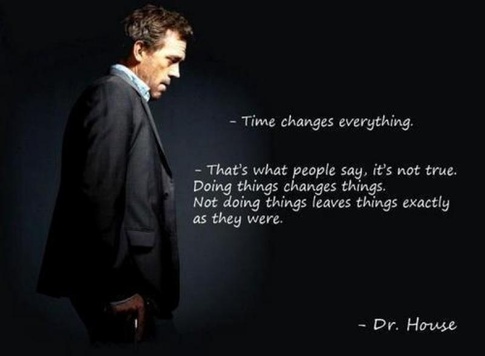
What shocked me was that when I took patients off of salt & caloric restriction, and placed them on low carbohydrate high fat diets (and yes, I gave them back their salt), their blood pressure normalized. I noticed that as their fasting insulin levels began to fall, their blood pressure began to return to normal.
What?! Blood pressure rise is caused by insulin?!
Ummm . . . Yes!
I am a prime example. During the first few years of my medical practice and reserve military service, we had routine vitals checkups. I was working out 3-5 days a week with weights and running 3-5 miles 2-3 times a week and restricting my calories to 1500 per day. So, I thought I was in pretty good shape. However, it was not uncommon for for the nurse to raise her eyebrows at my blood pressure readings in the 140-160 systolic and 85-98 range diastolic. “Oh, it’s the lack of sleep last night,” or “it’s the caffeine I had this morning,” would be my excuse. But I was making a lot of excuses, and in light of those excuses, my caloric restriction, exercise and salt restriction, I was also still gaining weight.
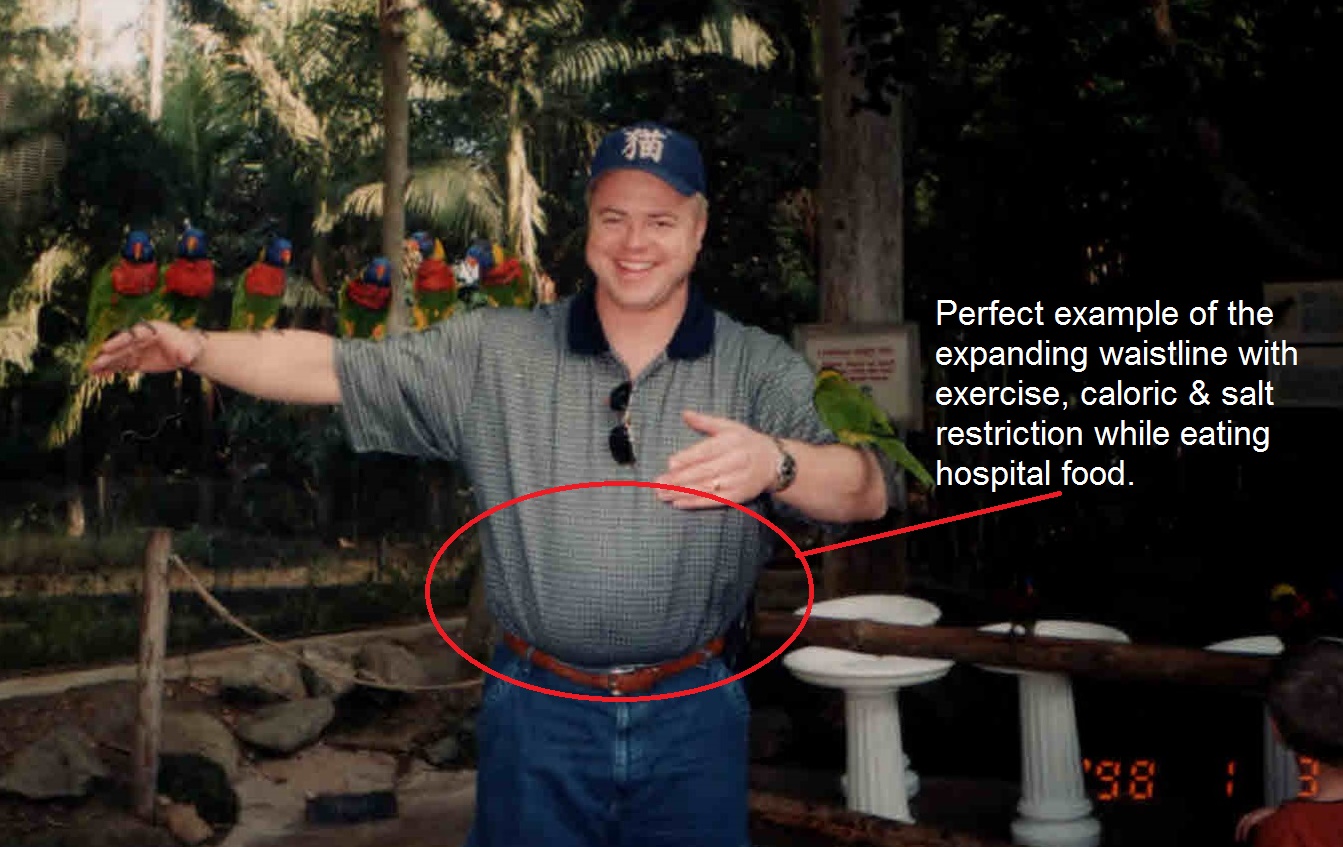
By the 5th year of my medical practice, I weighed 60 lbs heavier than I do today and I struggled to keep my blood pressure under 150/95. I was violating my own counsel . . . don’t trust a fat doctor for nutritional advise. (Or, was that advise from Dr.House?)

After cutting out the carbohydrates (I’ve kept my carbohydrate intake < 20 grams per day), moderating my protein intake and eating all the fat I am hungry for each day, my recent physical examination at the beginning of June 2016 revealed my blood pressure at 112/64. I don’t remember ever having blood pressure that low. And to be honest, I didn’t sleep well the night before my exam due to a number of middle of the night patient calls.

When I first started treating the insulin resistance problem in the human, rather than the blood pressure problem, I began to see immediate reductions in blood pressure within one to two weeks. So much of a reduction that if I didn’t warn the patient that they should  begin to back down their blood pressure medications, they would experience symptoms of dizziness, light-headedness, headache and a few patient’s nearly passing out. On a low-carbohydrate, high-fat (ketogenic) diet you need salt (sodium, potassium, & magnesium).
begin to back down their blood pressure medications, they would experience symptoms of dizziness, light-headedness, headache and a few patient’s nearly passing out. On a low-carbohydrate, high-fat (ketogenic) diet you need salt (sodium, potassium, & magnesium).
The process of burning fat as fuel causes you to lose increased amounts of sodium & potassium, and you have to replace these electrolytes. A number of my patients begin a low-carbohydrate, high-fat diet and are afraid of increasing their salt intake. Not replacing these electrolytes while on a ketogenic diet can also lead to low blood pressure, dehydrate and dizziness.
I often wondered why applying a ketogenic diet had such a profound effect on blood pressure so quickly. Dr. Robert Lustig helped answer that question for me.
In order to understand how the Standard American Diet (we call it the SAD diet in my office) raises your blood pressure, it is important to understand how the body processes the basic sugar molecule. Sugar is one glucose molecule bound to a fructose molecule. This is broken down in the body and 20% of the glucose is metabolized in the liver, the other 80% is sent on to be used as fuel throughout the body. Fructose, however, is where the problems arise. 100% of the fructose is metabolized in the liver, and the by product of fructose metabolism is increasing the liver’s production of MORE glucose and the byproduct of uric acid. Uric acid is produced and this inhibits the production of nitric oxide. The diminished nitric oxide in the presence of an increased level of glucose (stimulating increased insulin production due to eating starches) constricts the blood vessels and raises blood pressure. Yes, that donut you just ate raised your blood pressure for the next 12 hours. 
The mechanism that fructose containing carbohydrates, sugars and starches raise blood pressure, cholesterol and cause weight gain can be seen in the really complex diagram found in Dr. Lustig’s 2010 article:
So, how do you lower your blood pressure through diet?
First, cut out all the simple sugars. These include anything with table sugar, high fructose corn syrup and corn syrup. (This is why people with any change in diet see some improvement in weight and blood pressure as they remove the simple sugars like candy, sugared drinks and pastries from their diet.)
Second, limit your overall intake of other sources of carbohydrates including any type of bread, rice, pasta, tortilla, potato, corn and carrots. Realize that carbohydrate in fruit is fructose, and when taken with other forms of glucose can have the same effect as table sugar – it can and will raise your blood pressure, as well as halt or cause weight gain.
Third, if you are taking blood pressure medications for hypertension, see your doctor about close monitoring of your blood pressure as it can and will drop within 2-4 weeks of making these dietary changes.
Maintaining ketosis is really important for weight loss and blood pressure or hypertension control. I am very much an advocate of using real food for this process, but I have also found that the use of exogenous ketone salts aid significantly in maintaining ketosis. I have found that exogenous ketones are the next step in bridging the difficulty of day to day maintenance of ketosis.
It isn’t making the mistakes that’s critical; it’s correcting them and getting on with the task that’s important. If you’ve been calorie restricting and exercising to lower you blood pressure, don’t fret. A simple change in your diet focused on restricting starches and carbohydrates has been demonstrated in my office to be more powerful than many of the blood pressure medications we’ve used for years.
Learn how to get started on a low carbohydrate, high fat (ketogenic) diet here. You can also read about the basic principles in my recent articles The Principle Based Ketogenic Lifestyle – Part I and Ketogenic Principles – Part II.
Two Most Common Elements in the Universe: Hydrogen & Moronium . . . Maybe, Not In That Order
Over the last few months, I’ve found myself amid the center of vehement nutritional arguments about fat, carbohydrates, calories and diet. I have found it fascinating that very intelligent men and women, over the last 50 years, have accepted, without reservation, a dogma taught them by their eighth grade nutrition teachers. This dogma is interlaced and interwoven throughout the textbooks, manuals, and college cafeterias throughout the world.
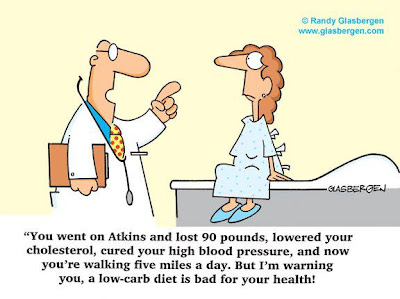
Very few souls have questioned this dogma, and even in light of it’s utter failure to improve one’s health, it becomes the fall back point upon which millions have accepted nutritional disease and defeat. It makes no sense that a dogma of this nature, without anything more than a scientific corellation in the 1960’s, could sway the minds of intelligent researchers, physicians and scholars for over 50 years.
It is a well known fact, however, that hydrogen is the most common element in the universe and is used as a basic building block for most molecular structures. What many don’t realize is there exists another element yet to be added to the periodic table that is almost as prevalent called moronium (pending symbol approval – Mu). It fills the blank space on the table of elements between Hydrogen and Helium. I, and those who have been able to identify this element, suspect that moronium is a gas at room temperature and has some affinity to binding the white matter of the brain responsible for catechol-O-methyltransferase (COMT) gene regulation of the prefrontal cortex. It is suspected by some that when it is inhaled by a person of low intellect, it has only a mild effect. However, when combined with either oxygen (O), hydrogen (H) or Helium (He) and inhaled by those of higher intelligence, it has a much wider, more potent and even stupefying diffusion effect, that is quite surprising to witness.

Moronium reacts adversely when diffused into blood with a higher alcohol concentration and seems to spontaneously combust when it is exposed to old paper and libraries. Moronium is very difficult and very expensive to isolate. Moronium seems to be more prevalent during the summer and winter solstices, which may be why moronium intoxication seems to appear around holidays. Recent attempts in a nearby lab to synthetically create even small crystals of moronium cause an explosion, physically and psychologically stupefying all of the researchers involved and inducing them to leave the study of science and pursue individual careers as drummers.
The presence of moronium seems to be higher in those that do not read, or have an aversion to reading. There is some correlation that moronium drops in proportion to listening to iTunes podcasts, however, follow-up reading does appear to have a potential lowering affect on the moronium levels within the brain.
Why do I bring this up?
I suspect that this little known element may be responsible for intelligent men and women introducing questionable theoretical science as incontrovertible truth. Those with suppressed COMT regulation seem to have a propensity to accept theoretical science because it sounds good, even when there’s really no way to actually prove the theory at the time, or when colleagues have accepted the theory in a peer-pressure instead of peer-review situation.
The stupefying effect of moronium bound COMT produces dogma like:
- We live in a Geocentric Universe (The earth is the center of the universe)
- Miasmatic Theory of Disease (A noxious poisonous vapor of air called miasma filled with decomposed particles of matter believed to be the cause of cholera and chlamydia or the Black Death)
- Ulcers are Caused by Stress
- The World is Flat
- Human Physiology is Controlled by the Four Humors: Black Bile, Yellow Bile, Phlegm and Blood
- Weight is gained by Over-Consumption of Calories & Fat
- Heart disease is Caused by Eating Too Much Fat.
The amazing thing about science is that it is self-correcting (at least it used to be). A scientist makes a set of observations about nature, and then identifies a plausible theory within the laws of nature to fit those observations. Then, researchers take that theory and test it in as many ways as possible, attempting to disprove the theory and isolate the cause of the observation. If the theory withstands scrutiny it becomes widely accepted.
At any given point in the future, if contradicting evidence emerges, the original theory is discarded and a new theory is then identified. In essence, this is the simple scientific method, however, in modern day application, it has become a great deal more messy than you’d think.
This approach (application of “the scientific method”) was skirted during the 1960’s and 1970’s regarding the “fat causes heart disease” theoretical proposition. Interestingly, there was also a notable increase in the number drummers and musicians during the 1980’s Hair Bands era. This begs the questions, which I wholly agree needs further study: Does moronium exist? and . . . . Did levels of moronium actually increase between 1960 and 1990 causing a surge in the presence and popularity of Hair Bands?

It only took us 20 years to get past the Era of the HairBands, hopefully we can turn the nutritional ship around and recognize the real culprit causing the Diseases of Civilization.
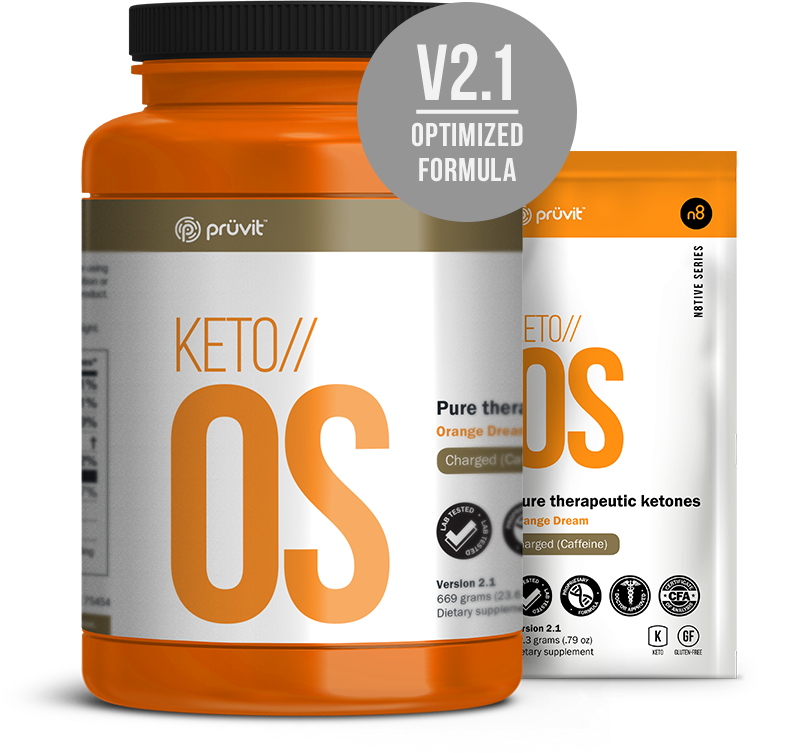

(Author’s Note: For those who may possibly be under the influence of moronium toxicity, the post above is written in sarcastic jest, and to be clear, there IS NOT an element currently under investigation called moronium!)
But I Said You're The Good Kind of Fat…
Can Healthy Fats Make You Fat?
Are Zero-Carb Diets OK?
And, Can You Heal A Damaged Metabolism With Keto?
Listen in to KetoTalk.com for Podcast #26.
The health podcast legend, Jimmy Moore, and I talk about how much fat is too much. Or, is it? What’s the deal with Zero-carb ketogenic diets? We answer your questions and try to give you the most up-to-date knowlege regarding the ketogenic lifestyle and how it affects your metabolism. We zero in exclusively on all the questions people have about how being in a state of nutritional ketosis and the effects it has on your health.
There are a lot of myths about “keto” floating around out there and we shoot them down one at a time.
You can down-load it for free on iTunes or listen to KetoTalk.com on your computer.
Enjoy!!
Why Ketosis is the Best Gift A Father Can Get for Father's Day
I’m sitting here at my home-office desk, on this beautifully hot 118° Arizona afternoon, eating this luscious piece of ketogenic Key-Lime & Blue-Berry Cheese Cake that my wife made for Father’s Day . . . pondering all the reasons ketosis has been a blessing in my life, specifically as a father. As I sit, reason after reason popped into my mind.

“Hmmm, I should share these . . . Why aren’t you sharing them?” I mused. So, with the the sweet tart of blue-berry on my palate and with a wipe of whipped cream from the corner of my lip, my fingers begin to click away on the keyboard.
What makes a person a father?
Testosterone –
Well, first, . . . Testosterone. I know. Leave it to a man to start with testosterone, but in the big picture, a man really isn’t a man if he doesn’t have a little extra testosterone, right? I mean, it was during the 5th week of embryonic development that my Y chromosome began signaling the differentiation of male fetal growth in-utero. And like every male, that same hormone testosterone continues to differentiate me from the human female counterpart throughout life.
Low testosterone has become a significant issue. 20-30% of the men in my practice suffer from some degree of suppression in testosterone when they first present in my office. In fact, you can’t watch late night TV any longer without being asked the question about low testosterone (Low ‘T’).
We know that the primary nutrient shown to affect testosterone to the greatest extent is fat. Studies reveal that diets low in fat are associated with lower testosterone compared to diets high in fat (1, 2). That begs the question, has 50 years of low fat diets made us less manly?

When did this become acceptable? And, does our diet of low fat have anything to do with it? I actually think it plays a role.

Testosterone is essential in providing energy, muscle mass & growth and actually keeping the waistline down. Adequate testosterone is one of the key components allowing the man to fill the father’s rolls of protector and provider, and if your diet doesn’t help stimulate its production, your less inclined to perform well in areas requiring its presence. That means that the bacon and eggs you crave in the morning lends toward your manliness, and the bagel and orange juice may be a little feminizing.
Fathers Need Muscles –
Second, father’s need muscles for all sorts of important things. It’s often Dad who carries the child on his shoulders, or lifts you above his head. It takes muscles for that.

We talked about the importance of testosterone in muscle development. That that’s not all. Many fathers can provide for their families specifically because of their ability to use that muscle. That’s not saying women can’t use muscle, too. I’m saying that a number of jobs that make our country function that require fitness, strength and muscle, like police, firefighters, construction, life-guards & delivery drivers. These jobs require muscle.

We now know that ketones, the primary fuel in a ketogenic diet, restrain muscle breakdown by decreasing leucine oxidation and preserving muscle mass (3). So, yes, visiting the donut shop actually does make you less manly by allowing the more rapid degradation of your muscles.
“Wasn’t it my muscles that first got your attention when we met and got this whole father thing started in the first place, honey?” I asked my wife in the kitchen.
“What?! No . . .” she responded.
“Oh, . . . never mind.”
Energy –
Whether you have great muscles or not, you need energy for the muscles you have to fill your role as a father. Work requires energy. As fat is increasingly used as fuel instead of sugar, the liver breaks it down and produces ketone bodies, or ketones. The liver itself, doesn’t use the ketones, so they are taken up by the muscles and brain for fuel. Increased energy, mental clarity and suppression of inflammation are the key findings that are noticed while using fat as your primary fuel. What father couldn’t us a little more of that?
In fact, several studies report that fathers have the biggest impact on the overall fitness and on the overall weight of their children. It was found that the father’s, not the mother’s, total and percentage body fat was the best predictor of whether or not the couple’s daughters gained weight as they got older (4). All the more reason to keep your waistline under control, Dad.
Another fascinating study showed fathers’ (again, not the mothers’) body mass index is directly related to a child’s activity level (5).
Energy and muscle is essential for “rough housing” and there is science to prove that “rough housing” makes your kids awesome! Psychologist Anthony Pellegrini, in the book The Art of Roughhousing, has found that the amount of roughhousing children engage in predicts their achievement in first grade better than their kindergarten test scores do. What is it about rough and tumble play that makes kids smarter? Well, a couple things.

Roughhousing makes your kids more resilient and resilience is a key in developing children’s intelligence. Resilient kids tend to see failure more as a challenge to overcome rather than an event that defines them. Intellectual resilience that comes from energetic fathers helps ensure your children bounce back from bad grades and gives them the grit to keep trying until they’ve mastered a topic.
Intelligence for You and Your Family –
Neuroscientists studying animal and human brains have found that bouts of rough-and-tumble play increase the brain’s level of a chemical called brain-derived neurotrophic factor (BDNF). BDNF helps increase neuron growth in the parts of the brain responsible for memory, logic, social intelligence and higher learning–skills necessary for academic success. We,also, now know that the brain that uses fat, or ketones, as it’s primary fuel recovers from injury and makes BDNF more effectively (6,7).
That rib-eye with steak butter your kids gave you for dinner is actually making you and them smarter and more resilient.
Overall Happiness –
The Harvard Grant Study completed in 1934, the longest longitudinal study ever done on the lives of men, found that a man’s father influenced his life in multiple ways exclusive to his relationship with his mother. Loving fathers imparted to their sons:
- Enhanced capacity to play
- Greater enjoyment of vacations
- Increased likelihood of being able to use humor as a healthy coping mechanism
- Better adjustment to, and contentment with, life after retirement
- Less anxiety and fewer physical and mental symptoms under stress in young adulthood
It should be noted that “it was not the men with poor mothering but the ones with poor fathering who were significantly more likely to have poor marriages over their lifetimes.” Men who lacked a positive relationship with their fathers were also “much more likely to call themselves pessimists and to report having trouble letting others get close” (8).
You, as a father, matter. And, being in ketosis makes you an even better father! Seriously.

When all is said and done, a man’s relationship with his father very significantly predicted his overall life satisfaction at age 75 — “a variable not even suggestively associated with the maternal relationship” (8).
So, back to my key-lime blue-berry cheese cake, my wife just made me a better husband and father. Thanks, Dear!!
References:
- Hamalainen, E., H. Aldercreutz, P. Puska, and P. Pietinen. Diet and serum sex hormones in healthy men. J. Steroid Biochem. 20:459-464, 1984.
- Reed, M.J., R.W. Cheng, M. Simmonds, W. Richmond, and V.H.T. James. Dietary Lipids: an additional regulator of plasma levels of sex hormone binding globulin. J. Clin. Endocrin. Metab. 64:1083-1085, 1987.
- Nair KS, Welle SL, Halliday D, Cambell RG. Effect of β-hydroxybutyrate on whole-body leucine kinetics and fractional mixed skeletal muscle protein synthesis in humans. J Clin Invest. 1988;82:198–205.
-
Figueroa-Colon R, Arani RB, Goran MI, Weinsier RL. Paternal body fat is a longitudinal predictor of changes in body fat in premenarcheal girls. Am J Clin Nutr. 2000 Mar;71(3):829-34.
-
Finn, Kevin et al. Factors associated with physical activity in preschool children. J of Ped., Vol 140, Issue 1, 81-85
-
Vizuete AF1, de Souza DF, Guerra MC, Batassini C, Dutra MF, Bernardi C, Costa AP, Gonçalves CA. Brain changes in BDNF and S100B induced by ketogenic diets in Wistar rats. Life Sci. 2013 May 20;92(17-19):923-8.
- Masino SA, Rho JM. Mechanisms of Ketogenic Diet Action. Jasper’s Basic Mechanisms of the Epilepsies [Internet]. 4th edition. Bethesda (MD): National Center for Biotechnology Information (US); 2012.
- Valliant GE. Triumphs of Excellence: The Men of the Harvard Grant Study. 1934
High Blood Ketone Levels, Effect Of Alcohol On Ketosis, Doing Keto Without Exercise

If you are interested in the low-carb, moderate protein, high-fat, ketogenic diet, then this is the podcast for you. We zero in exclusively on all the questions people have about how being in a state of nutritional ketosis and the effects it has on your health. There are a lot of myths about keto floating around out there and our two amazing cohosts are shooting them down one at a time. Keto Talk is cohosted by 10-year veteran health podcaster and international bestselling author Jimmy Moore from “Livin’ La Vida Low-Carb” and Arizona osteopath and certified bariatric physician Dr. Adam Nally from “Doc Muscles” who thoroughly share from their wealth of experience on the ketogenic lifestyle each and every Thursday. We love hearing from our fabulous Ketonian listeners with new questions–send an email to Jimmy at livinlowcarbman@charter.net. And if you’re not already subscribed to the podcast on iTunes and listened to the past episodes, then you can do that and leave a review HERE. Listen in today as Jimmy and Adam have some fabulous questions to answer for you in Episode 24!
KEY QUOTE: “Initially you’ll see a higher level of ketones (when you begin eating ketogenic). But as the body becomes better able to use the ketones, the overall level will drop to more normal readings.” — Dr. Adam Nally
Have you experienced Keto//OS? A revolutionary way to enter ketosis in 60 minutes or less. . .
KetoKreme – Exogenous Ketones in Cream Form!!
It’s here! KetoKreme for those of you that are coffee drinkers, now there’s a way to add exogenous ketones to your morning coffee or postum . . .
I’m not a coffee drinker, but this stuff is quite tasty when you want to add a creamy exogenous ketone boost to any drink. My son loves to add it to his Diet A&W Cream Soda. It’s the only way I can get him to drink exogenous ketones.
Sign up for yours by clicking the link above.
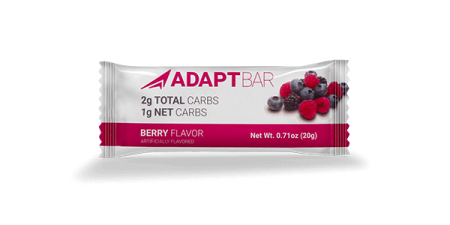
Vascular Plaque Reduction with Ketogenic Diet – A Case Study
Does your diet really reverse vascular disease? I mean, will the diet you’re following ACTUALLY reverse the plaque burden that has occurred over the years of eating the SAD diet (Standard American Diet)?
It appears that the ketogenic diet does. At least that’s what research is showing, and that’s what I am seeing clinically. Let me give you an example. Reversal of vascular disease is what I saw last week in this patient case study in my office.
Meet “Mrs. Plaque” (name has been changed to protect her identity). She is a very pleasant 78 year old female who has been seeing me as a patient for the last 10 years. We identified worsening cholesterol and hyperinsulinemia in this patient a few years ago, and last year, she finally decided to go on a ketogenic diet after we noted slight worsening blood sugar (HbA1c increased to 6.1%), worsening cholesterol and a recent TIA (transient ischemic attack or “mini stroke”). We identified a 44% blockage in her left internal carotid artery and a 21% blockage in the right internal carotid artery putting her at risk for further cerebral ischemic events like a stroke and/or other vascular events like a possible heart attack down the road. She refused STATIN therapy as she had previous myalgia and side effects with their use in the past.
Past Medical History: Hyperlipidemia, Impaired Fasting Glucose (Pre-Diabetes),.Asthma, GERD, Irritable Bowel, Generalized Anxiety, Idiopathic Peripheral Neuropathy, Surgical Menopause (Hysterectomy) with Secondary Atrophic Vaginitis, Recent TIA, Cataracts, Appendectomy
Medications: Plavix 75mg one daily, Premarin Cream 0.635mg every other day, Xanax 0.5mg at bedtime for anxiety, Lyrica 50mg one nightly for neuropathy, Vitamin D 2000 IU daily , TUMS 750mg twice a day.
Her carotid ultrasound and carotid medial intimal thickness (CIMT) study completed April 1, 2015 is present below. You can see that her intimal thickness is only slightly higher than the average female her age, however, she has notable internal carotid artery blockage in both the right and the left sides.

The “mini stroke” and the report above, convinced her that she needed to tighten up her diet. The patient’s husband was also a diabetic and the patient had been “partially” restricting sugar in her diet up to this point in time, however, she had not fully jumped on the ketogenic band wagon. At this point she decided to change her diet.
She was placed on a ketogenic diet, restricting her carbohydrates to no more than 20 grams per day and increasing total fat to >50-60% of her total calories. Nothing else changed including her medications. She followed this program for the next year and this is the blood work that she had while following this program:
| 4/2/2015 | 8/4/2015 | 11/6/2015 | 5/12/2016 | |
| HbA1c (%) | 6.1 | 5.8 | 5.2 | |
| Tot Chol (mg/dL) | 224 | 156 | 230 | 233 |
| HDL (mg/dL) | 76 | 76 | 87 | 96 |
| LDL-C (mg/dL) | 134 | 65 | 128 | 123 |
| Small Dense LDL-P (nmol/L) | 481 | 150 | 222 | 217 |
| Triglycerides (mg/dL) | 72 | 76 | 74 | 68 |
| Fasting Insulin (uIU/mL) | 12 | |||
| Glucose (mg/dL) | 91 | 95 | 92 | 85 |
Because she was already partially restricting her sugar intake, her triglycerides and small dense LDL particle number was not bad, however, her average blood sugars were still significantly elevated. Weight decreased from 127 lbs to 119 lbs in August. She admits to slightly increased protein intake over the holidays and her weight increased back up to 125 lbs as of her last visit.
These labs also demonstrate that Total Cholesterol and LDL-C don’t appear to correlate with regression of plaque.
The image below is the patient’s repeat CIMT and carotid ultrasound 13 months later through the same lab. What is dramatic is that she has had over 10% regression in the plaque in both internal carotid arteries and a return of her carotid intimal thickness to the average female in her age bracket.
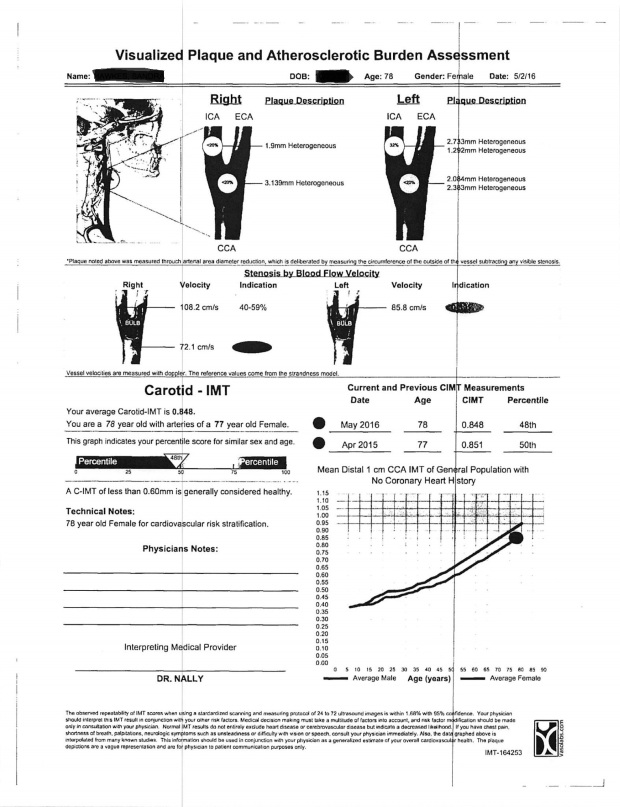
This case study is consistent with the findings of Dr.Shai and his group when they did a two year comparative dietary intervention study of Low Fat – Group 1, Mediterranean Diet – Group 2, and a Ketogenic Diet – Group 3 on vessel wall volume and CIMT.

Carotid IMT changed by −1.1% from 0.816 mm at baseline to 0.808 mm after 2 years (P=0.18), with no significant difference between diet groups (P=0.91). There was a trend toward significant correlation between the 2-year changes in carotid IMT and VWV (r=0.173, P=0.056).
So, does your diet reverse vascular disease? Evidence is pointing to the fact that the ketogenic diet does. I return to the statement Hippocrates made over 2000 years ago, “Let food be thy medicine, and let medicine be thy food.”
Oh, and pass the bacon.
Keto//OS Orange Cream Soda . . . Oh, Yeah!
Ok, for those of you who are using Keto/OS (I commend you for your insightful use of the next step in ketogenic metabolism bio-hacking), I have discovered one of my new favorite mixes. (If you’ve already tried this mix, then where have you been and why didn’t you tell me about it?!)
Enter Keto//OS – exogenous ketones that aid in shifting you into ketosis. Yes, they actually do work and usually bump my ketones up 0.5 mmol/L to 1.5 mmol/L when I use them.
So, I mixed my orange flavored Keto//OS version 2.1 with Diet A&W Cream Soda, and voala, Orange Cream that takes me back to childhood memories!! You gotta try this.

As you know, I have no problem with using Diet Dr. Pepper, Diet Coke (NOT Coke Zero!), Diet Mug Rootbeer & Diet A&W Cream Soda. The sweetener that these four sodas use does not kick you out of ketosis, and I am OK with my patients using them on my Ketogenic diet. (Yes, I am OK with most of my patient’s using aspartame. Yes, I’ve actually read the studies . . . have you?! That’s why I’m OK with it’s use.)
If you haven’t tried Keto//OS yet, you can get your sample here.
KetoTalk Podcast #21

Listen to Dr. Nally & Jimmy Moore as they answer the following questions in KetoTalk Podcast #21.
- How can I get back started on keto again?
- Do I need to quit keto once I hit my weight loss goal?
- Is flax and flaxseed oil okay on a ketogenic diet?
- What to do when you are sleepy on a low-carb ketogenic diet?
- I know that some people lose fat on a low fat diet. When people lose fat on a low-fat diet are they they also in a state of ketosis?
Get the answers to these questions and much more when you listen to KetoTalk.com or download the podcast for free on iTunes.
KetoTalk From the Caribbean Sea

Dr. Nally recently spoke about Low-Carbohydrate/Ketogenic Diets on the 2016 Low Carb Cruise to the Eastern Caribbean. While there, he and Jimmy Moore recorded another episode of KetoTalk with Jimmy and the Doc.
Listen in to KetoTalk Episode 20: A LIVE Q&A Session From The 2016 Low-Carb Cruise
Here’s what Jimmy and Dr. Nally talked about in Episode 20:
– We are in front of a LIVE audience of Ketonians
– How long will you experience hair loss when you go ketogenic?
– What role does resistant starch have on the keto diet?
– Is eating high-fat with high-carb harming my boyfriend?
– How does intermittent fasting help with keto?
– Whether to count total vs. net carbohydrates
– Whether you need to cycle carbs when building muscle
– What the best way to test your ketones is
– How to test blood ketones on a budget
– What the difference is between an NMR and basic lipid panel
– The dramatic changes in your cholesterol when going keto
– How long should you be on keto before running blood tests?
– Whether you should cut fat lower on keto to speed up weight loss
– Is having a lower body temperature a bad thing when eating keto?
You can listen at the iTunes page here, or download it for free to your favorite iTunes player.
Principle Based KetoDynamic Lifestyle
After talking to a number of people, including patients and other low carbohydrate / ketogenic doctors over the last few months, there is a tremendous need for a
 principle based approach to a ketogenic lifestyle. This approach, however, must be simple. So many of the approaches to health and weight loss I read about are complex and the questions that arise from these approaches are innumerable. Losing weight should not be as difficult as putting a man on the moon. To quote a patient recently, “If it ain’t simple, Doc, I ain’t doing it. . .”
principle based approach to a ketogenic lifestyle. This approach, however, must be simple. So many of the approaches to health and weight loss I read about are complex and the questions that arise from these approaches are innumerable. Losing weight should not be as difficult as putting a man on the moon. To quote a patient recently, “If it ain’t simple, Doc, I ain’t doing it. . .”
I agree.
Weight Loss Should Be Simple
Any approach that requires the conversion of food to numbers, calories or exchanges becomes cumbersome, and I personally won’t follow it for more than a week. The principle based approach should be simple and is really based upon the mantra:
Give a man a fish and he will eat today. Teach a man to fish and he will eat for the rest of his life.
The first problem is that we refer to low-carbohydrate or ketogenic diets as “diets.” What I’m talking about is a ketogenic lifestyle. Simple lifestyle design should not be hard. So, what do you say? Shall we learn to fish?!
Weight Gain Is Due to Insulin Excess
I assume that if you’re reading this article, you already understand that weight gain is not due to an over intake of calories. Weight gain is due to hormone signals throughout the body leading to the storage of fat . . . specifically, triglycerides being taken up into the fat cells. The hormone that independently controls uptake of fat into each fat cell is insulin. Insulin is an essential hormone, but too much of it stimulates the adipose (fat cells) to over-stock triglycerides or essentially “get fat.” It, actually, is that simple. There’s really only one rule to this lifestyle: If it raises your insulin it will halt or stall your weight loss. Write that on your hand or your forehead or in your planner, the lifestyle revolves around that one rule.
Most people start a ketogenic lifestyle because they want to lose weight and have failed at multiple other dietary approaches. Reasons for weight control failure are often multi-faceted, but they all start with from a position of flawed understanding. The majority of approaches to weight management come from the false assumption that weight is gained because of an over-consumption of calories or a lack of physical activity to burn excess calories. People have been restricting calories faithfully and exercising to exhaustion since the early 1980’s to no avail. (Well, 1% of people succeed, but the rest of us failed this approach). The definition of insanity is repetitive completion of an ineffective action and expecting a different outcome each subsequent time around. If you still think that caloric restriction and exercise is successful, I’ll be shipping your drawstring white vest and your invitation to a padded cell shortly.
The Effect of Caloric Restriction & Exercise
Let me put it clearly. We’ve been exercising and cutting our calories since 1975 and look at what it’s gotten us . . .
. . . . a country that is now recognized as the “United States of Corpulence.” Super-Size me has become literal. “Houston . . . we have a problem . . . !”
The rule above is based on foundational principles. Understanding of the principles allows one to successfully apply the rule above.
PRINCIPLE 1
The first principle in a ketogenic lifestyle is understanding that the problem is not caloric, but hormonal. Choices and actions from here on out must be based on this understanding. Anything that will raise insulin will thwart ketosis. Insulin stimulates lipoprotein lipase, the enzyme that pulls the triglycerides into the fat cells. Without insulin, we don’t gain weight. (That’s why type I diabetes are usually very slender and skinny).
The standard lab value for normal fasting insulin levels reflect 10-22 uIU/L as the normal. However, in my office, glucose tolerance tests and postprandial glucose tests consistent with impaired fasting glucose are routinely positive when the fasting insulin level is >5 uIU/L.
Point of Focus: If you’re having trouble, look at the hormones. Food stimulates hormone responses. Focus on the hormone response to your diet.
PRINCIPLE 2
A ketogenic diet is one where the body uses fatty acids as the primary fuel. Those triglycerides mentioned above are made up of three fatty acids linked to a glycerol molecule. To use the triglycerides, the three fatty acids must be broken away from the glycerol by hormone senstive lipase (HSL). Insulin directly inhibits HSL. Keeping insulin levels low is the first step in shifting to a ketogenic metabolism. Lowering insulin allows access to the fatty acids in your fat cells. Triclycerides are not water soluble and the rate by which they can be taken up and burned in the mitochondria limits the speed by which triglycerides can be used as fuel. The byproduct of triglyceride burning is ketones. Ketones themselves can be used as fuel and over 4-6 weeks, the body can enhance its ability to use ketones when fat is the primary fuel. This is called “Keto-Adaptation.”
Point of Focus: Too much carbohydrate or too much protein in the diet shifts the body from the use of triglycerides. In general, to become “keto-adapted,” limit carbohydrate to < 20 grams per day. Keep protein < 1.0 grams per kilogram of ideal body weight for women and <1.5 grams per kilogram of ideal body weight for men.
PRINCIPLE 3
Wait a minute!? Where do the ketones come in? When fatty acids are burned or oxidized in the mitochondria of cells within the liver, they are converted into Acetyl-CoA. The Acetyl-CoA is used to form ATP for energy in the Citric Acid Cycle.
IF excess Acetyl-CoA production occurs or if inadequate oxaloacetate is present, the extra Acetyl-CoA is transformed into ketone bodies – specifically beta-hydroxybutyric acid and acetoacetic acid. Fat can be oxidized or burned for fuel while ketones are being produced. Ketones are much smaller molecules and can more easily be transported in the blood than triglycerides, as they are water soluble. The ketones themselves can also be used or burned as fuel as the body upregulates the mitochondria’s ability to use the ketones as fuel as well. As I mentioned above, this process of “keto-adaptation” can take 4-6 weeks. Keto-adaptation results in humans having a greater desire to be physically active – the miraculous conversion of the couch-potato into the bacon-burning triathlete.
Point of Focus: Sugar is a drug. Its byproduct has the same hedonic effect on the brain as morphine. Sugar withdrawal can commonly cause headache, anxiousness, insomnia, dizziness, fatigue and moodiness within the first week of carbohydrate restriction on the road to keto-adaptation.

PRINCIPLE 4
For the average person to become “ketotic” or reach a state of ketosis, it takes lowering the carbohydrates to less than 20 grams per day (and sometimes less than 10 grams per day) for at least 3-7 days. Yes, it can actually take a week to reach ketosis. I have a few patient’s that are so insulin resistant that it takes longer. This means that to reach that fat burning state, one must maintain a low insulin response by restricting starch or carbohydrate intake to less than 20 grams per day for a minimum of a week. For your body to efficiently use the fuel it can take up to 6 weeks. This is why many people state that they “don’t feel good” or “can’t maintain their exercise levels” when starting a ketogenic diet. For most people, once they reach the 6 week mark, mitochondria have been unregulated and “fine tuned” to burn ketones, fat burning becomes efficient and energy levels begin to increase. In fact, for many like myself, you’ll finally feel like exercising for the first time in your life.
Point of Focus: If you’re already exercising, don’t be surprised if you feel more sluggish for the first four weeks. If you’re not exercising, I don’t recommend starting until after you pass through the Keto-Adaptive phase.
PRINCIPLE 5
Clinically, the average patient in my office will lose 5-15 lbs each month for the first three months. Then the weight loss will slow to 2-5 lbs per month. However, 1/2-1 inch continues to disappear off the waist circumference measurement every month. THIS IS NORMAL. Continued weight loss of 15 lbs a month will leave you looking like the Michelin Tire Man – rolls of skin without fat. The body slows the weight loss to keep up with skin and connective tissue remodeling. As long as ketosis is maintained, the fat will continue to melt away. At this point, I’m not so worried about scale weight as I am your waist circumference.
Point of Focus: Successful ketosis does not always affect the scale, but usually causes your pants to fall down.
PRINCIPLE 6
It has been my experience that it takes about 18 months for the average patient to reverse the insulin resistance while following a carbohydrate-restricted, high-fat ketogenic lifestyle. There is no quick fix for this. If there was, I’d be sitting on a beautiful beach in the Caribbean.
Point of Focus: The ketogenic lifestyle is actually the antidote to insulin resistance, diabetes and the diseases of civilization.
PRINCIPLE 7
Improvement in insulin resistance has also been demonstrated with mild to moderate intensity resistance exercise. Moderate intensity resistance exercise is 20-30 minutes of exercise like walking, easy jogging, cycling, lifting weights, yoga or Pilates with speeds or weight heavy enough to break a sweat, but not so fast or heavy that you cannot carry on a conversation with your exercise partner. Exercise improves insulin resistance – BUT IT DOESN’T CAUSE WEIGHT LOSS! Yes, I know, Jack LaLanne just rolled over in his grave. But, let me say that again. Exercise improves insulin resistance, but it does not improve weight loss!! The three largest and most intensive studies of exercise involving over 67,000 people demonstrate that you can exercise till the cows come home and you’ll average about 1% weight loss. If you exercise, realize it WILL make you hungry. Eating the wrong food (carbohydrate containing foods) will stimulate insulin release causing your exercise to be fruitless (Actually, your diet should be “fruit-less” anyway)
Point of Focus: Exercise because you feel like it, it improves insulin sensitivity and it decreases stress, not for weight loss.
 PRINCIPLE 8
PRINCIPLE 8
If you are eating enough fat, you won’t be hungry. Although this doesn’t always hold true in the case of patient’s with leptin resistance. 40-60% of patients with insulin resistance have a concomitant leptin resistance (see the article on lepin resistance here). A ketogenic diet is one in which 50% or more of total calories come from fat. No, you don’t have to count calories, just pick foods that contain 45% fat or more. Look for grass fed products as they will be higher in Omega 3 fatty acids. Red meat is 55% fat. Pork is 45% fat. This is where the chicken salad or turkey wrap fails (see Why Does Your Chicken Salad Stop Weight Loss). Look for alternatives to replace your basic meals and snacks. If you love chips, try pork rinds or make chips from fried cheese or pepperoni. Guacamole is a great replacement for bean dip.
Point of Focus: There is no need to eat 3-6 times per day. As you increase the fat in your diet you will feel more full. Eat when you are hungry, whether that is 3 times a day or once a day, listen to your body.
PRINCIPLE 9
I’ve been following a principle based ketogenic lifestyle since 2005. The most common complaint I hear is, “Dr. Nally, I’m tired of eating eggs.” Ketogenic lifestyles don’t have to be boring. There are hundreds of resources on the web for spicing up your ketogenic diet. See the Recommended Sites page above for some ideas to start. The Ketogenic Cookbook by Jimmy Moore and Maria Emmerich is a recent edition to the literature and a fantastic resource. Check out Franziska Spritzler’s Low Carb Dietitian website and new book as well. If you live in the UK, you should see Emily Maguire’s website and blog. She just completed a world tour, sampling all the low carbohydrate foods and restaurants around the world. If you are a picture person, check out the Best Keto Meals of 2015 pintrest page followed by almost 16,000 people. If you haven’t taken the time, you should visit Dr. Andreas Eenfeldt’s website. He is one of Sweden’s premier ketogenic doctors who provides an immense number of resources on his website, Diet Doctor. Finding someone that can help you fine tune your diet is also essential. You can find a list of doctors that use ketogenic diets here.
Point of Focus: This lifestyle will require you to use real, whole food and cook like your grandmother or great grandmother did in the past. Unfortunately, we’ve lost a great deal of the art of cooking that needs to be re-discovered. If your lifestyle is too busy to cook and prepare real food, that busyness is probably causing you stress, another culprit in the weight gain cycle. The truth will set you free, but it will probably make you miserable first.
PRINCIPLE 10
WARNING! A very sweet patient of mine was given these instructions to treat her weight and blood sugar abnormalities. She applied these principles and they worked marvelously. She called me a few weeks later, however, mad as a wet hen. She placed her husband (not my patient at the time) on the same dietary changes. Her husband, who had significant blood pressure problems and was on four different blood pressure medications I later found out, had a sudden drop in his blood pressure and passed out. As happens to many of my patients, blood pressure, ejection fraction of the heart and blood sugars quickly begin to normalize. However, he never saw his doctor and never had is blood pressure medications adjusted. Because of the normalization that can occur in as rapidly as 1-2 weeks, the medications became much too strong, he passed out and ended up in the emergency room. These dietary principles are effective. They are often just as powerful as a number of the medications that we routinely prescribe.
Point of Focus: Please see your doctor before beginning any of these dietary recommendations, especially if you have any underlying medical conditions including Hypertension, Diabetes, Congestive Heart Failure, Coronary Artery Disease, Gout, Kidney Stones, etc., please do not try the dietary changes alone. Find a physician trained in the use of this type of dietary lifestyle in combination with close monitoring of your blood pressure, blood sugar and other key vital signs.
Stay tuned for Ketogenic Principles . . . Part II in the series where we’ll address Food Psychology, To Cheat or Not to Cheat, and Keeping it Real . . .
Will A Ketogenic Diet Protect You from the #FitchSlap?
Join Dr. Nally this evening when he appears as a special Guest Host with Vicki Fitch, veteran author, speaker, business coach. He appears live on blab tonight on Vick’s #HeSaidRedSaid at 7:30pm PST. You click here to subscribe to the live blabcast.
Find out if Dr. Nally can handle the pressure. Will a Low-Carb, High-Fat diet protect you from the infamous #FitchSlap?
Will Vicki ask the really challenging questions like:
- How tall was the 50′ mast on the Mayflower?
- What color was George Washington’s White horse?
- Has technology really created a Generation of Idiots?

4. Is Heaven really made of bacon?


5. Will you break your toe if you eat a Low-Carb, High Fat diet?
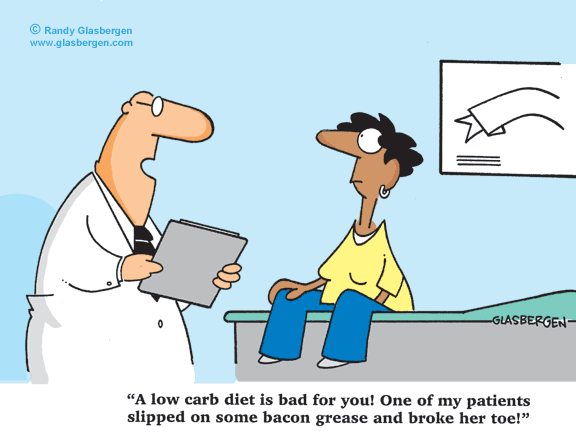
6. Was this really the first insulin pump? Or, is it Vicki’s old accordion being tuned up?
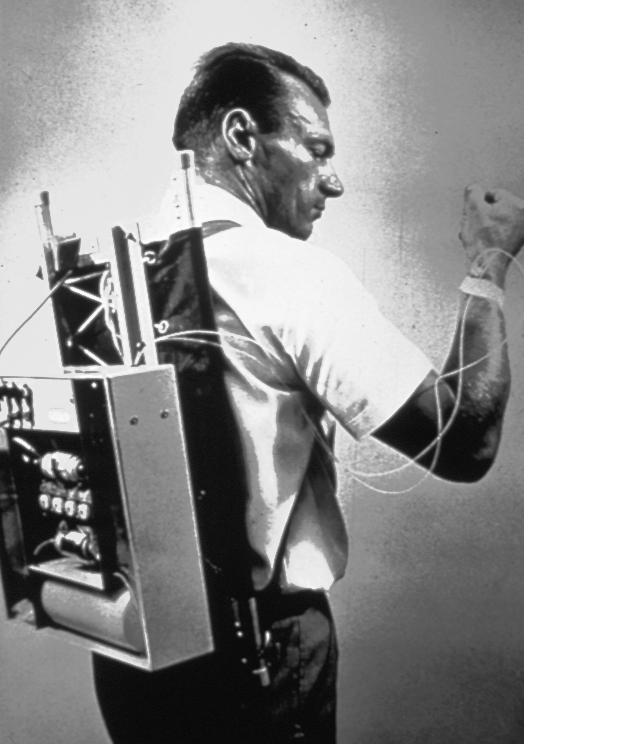
And, see if the fears of many around the world will come to fruition this evening:









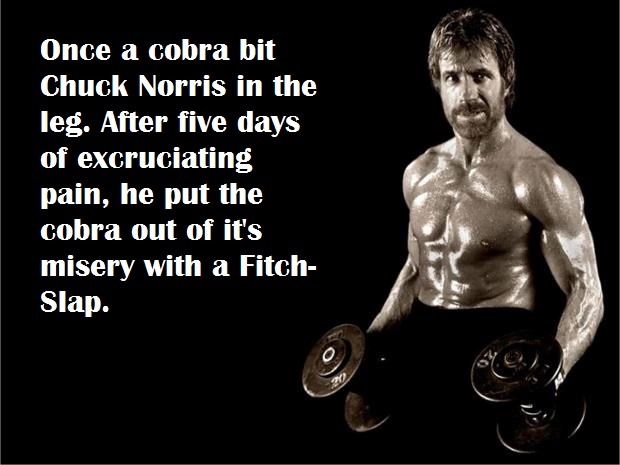






Can You Gain Muscle On A Ketogenic Diet?

Listen in to Ketotalk Podcast #19 where we talk about inflammatory foods, building muscle with a ketogenic diet & how ketosis affects the Baby Boomer Generation.
Keto Talk is cohosted by 10-year veteran health podcaster and international bestselling author Jimmy Moore from “Livin’ La Vida Low-Carb” and Arizona Osteopath and Board Certified Obesity Medicine physician Dr. Adam Nally from “Doc Muscles” who thoroughly share from their wealth of experience on the ketogenic lifestyle each and every Thursday.
We love hearing from our fabulous Ketonian listeners with new questions–send an email to Jimmy at livinlowcarbman@charter.net. And if you’re not already subscribed to the podcast on iTunes and listened to the past episodes, then you can do that and leave a review HERE. Listen in today as Jimmy and Adam answer more engaging questions about nutritional ketosis from you the listeners.
The Alzheimer's Carb Up Puzzle Piece
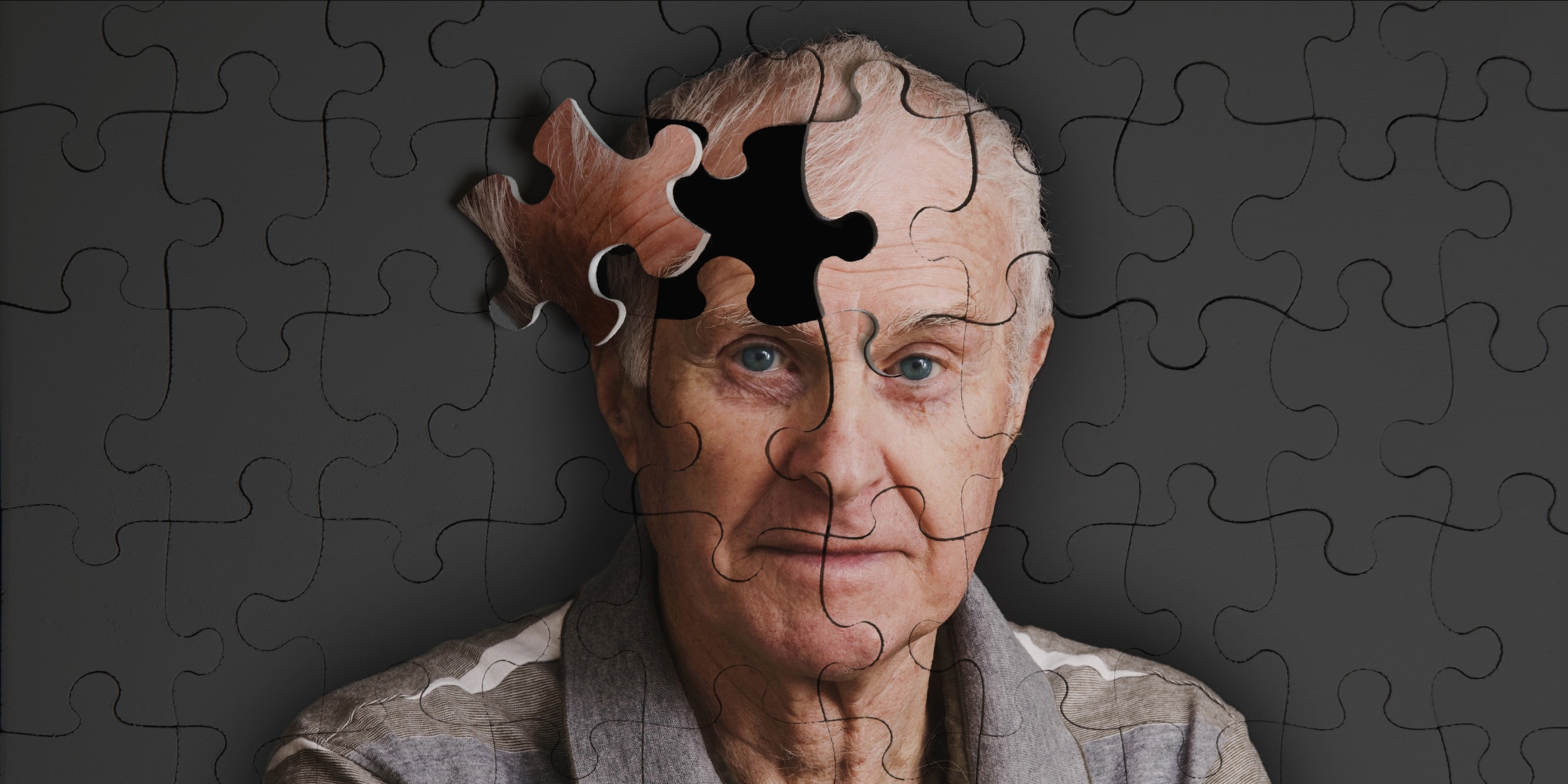
Alzheimer’s Disease is a progressively devastating, fatal disease that affects 5.2 million Americans and over 44 million people throughout the world. This disease is often more difficult on the families and caregivers, then on the patient’s themselves. With my office located near three of the country’s largest retirement communities, it is a disease that I see and treat every single day.
A paper published in the Journal of Alzheimer’s Disease this week, confirmed suspicions and patterns that I have been seeing for over 15 years. A significant number of my patients with Alzheimer’s dementia (AD) also have insulin resistance, impaired fasting glucose or diabetes mellitus – type II. I have long wondered if there was a tie to these diseases because of the patterns seen in my office. However, much of the research examining the association between type II diabetes and AD have come to differing conclusions about the cause. Some have concluded that insulin resistance is to blame and others have concluded that insulin deficiency may play a role. Other studies have found that a hormone called amylin secreted with insulin is to blame. And, other articles have found that both amylin and amyloid-beta protein form the plaques within the brain common to AD. Lastly, more recent data complied appears to point to the opposite conclusion – that amylin provides neruro-protective effects and may actually reduce the symptoms of AD. So, what are we to make of all of this? How is the doctor in the trenches to interpret and then advise those with or at risk for Alzheimer’s Disease?
The paper referenced above, by Dr. Schilling, takes all of this data into account and with careful attention to research methods and compiling immense amounts of data from all of these studies, it identifies the integration points with insulin and insulin-degrading enzyme (IDE) that have begun to disentangle the research. What it reveals is fascinating information.
First, under normal circumstances, we now know that insulin stimulates the expression of IDE, which subsequently breaks insulin down after it is used. IDE, however, also plays a roll in breaking down amyloid-beta protein and other amyloidogenic peptides. Alzheimer’s disease is caused by a build up of these amyloid based proteins forming plaques within the human brain.
Second, the body’s system for breaking down and removing these plaques can fail or become inefficient in four different ways. What has been confusion for many years to researchers is now much more clear with our clarified understanding of insulin resistance moving through five different stages (see my article on Diabetes Mellitus type II – really the fourth stage of insulin resistance).
What are these four possible points of breakdown?
- In the fifth or last stage of insulin resistance (where insulin deficiency occurs due to pancreatic failure and lack of adequate insulin production) or in a type 1 diabetes patient who makes no insulin at all, inadequate IDE can result in accumulation of amyloid-beta in the brain. Poor IDE production may cause amylin and amyloid-beta plaques in the brain.
- Diminished IDE production due to any other cause may lead to amylin and amyloid-beta plaque formation leading to AD
- Excessive production of insulin, occurring in stages I-IV of insulin resistance, stimulates increased amylin production which competitively inhibit breakdown of amyloid-beta resulting in AD.
- Production of more than the typical level of amyloidogenic peptide that outpaces the formation of IDE is the fourth mechanism occurring with insulin resistance and stimulates the formation of amyloid plaque in the brain consistent with AD.
Further study is essential to tease out what the nuts and bolts of the mechanism may be, but with our understanding of stages of insulin resistance, the puzzle pieces are falling into place. This conglomeration of data provides further confirmation that insulin resistance is likely the key player in the progression of Alzheimer’s Disease years before type II diabetes or type I insulin dependence are ever diagnosed in the individual.
What is the take home message today? Impaired fasting glucose, diabetes mellitus and Alzheimer’s disease are later expressions of the underlying problem: insulin resistance. This is where a low carbohydrate and/or ketogenic diet begins to play a huge role in both prevention and treatment of Alzheimer’s Disease.
More to come . . . In the mean time, pass the butter and the Keto//OS.

Ketogenic Lifestyle Side-Effect: Pregnancy

Be warned, a ketogenic diet may cause pregnancy . . . !
Infertility and poly-cystic ovarian syndrome (PCOS) is a common occurrence in women with insulin resistance, pre-diabetes and diabetes. When treated with a ketogenic lifestyle, these symptoms often improve dramatically, and in fact, I’ve had a number of women in my medical practice, previously unable to conceive due to PCOS, get pregnant after changing to a ketogenic diet.
We discuss PCOS, as well as CrossFit, NSAIDs, Toxic Mold, And Calorie Restriction On Keto-Talk this week. Tune in here on you computer or down-load today’s podcast on iTunes for free. You won’t be sorry.
KetoDynamic Successes . . .

As I reviewed my website recently, I realized that I have posted lots of science but I’ve never posted any success stories. So, as patient’s are comfortable & willing to share, I will begin posting these experiences here on the blogosphere for the world to witness their successes and the power of the KetoDynamic Antidote.
The first success story is my own. This picture of me and my wife, were taken after I had been following a ketogenic lifestyle for about 4 years. I dropped 60 lbs, normalized my cholesterol and blood sugar also normalized. I couldn’t and wouldn’t recommend these lifestyle changes unless I was willing to follow them for the long haul myself. I call people following a ketogenic lifestyle for longer than a year “Ketonians.”
Not only mine, but hundreds of patient’s having similar successes have become the greatest reward to my career as a physician over the last 15 years. They are truly the “KetoDynamic Moments” that etch themselves into my memory and have made me such an advocate of a ketogenic lifestyle. Therefore, it is with great honor and excitement that I have been allowed to share Michelle’s story below.

Michelle started seeing me in October 2015. She has struggled with weight all her life and, now in her late 40’s, weighed 201 lbs with a waist circumference of almost 36 inches and a body mass index of 32. Her “before” picture was taken just before a Halloween activity in 2015. Her “after” picture was taken in late March 2016.
A simple ketogenic lifestyle change ( <20g of carbohydrates, moderate protein for her ideal body weight & increasing fat to > 60% of total calories) has produced almost 50 lbs of weight loss and 6 inches off her waist in just 5 months. This was with dietary change only (Michelle doesn’t exercise) and she’s still losing weight. What is dramatic, and I see it every day, is that Michelle looks younger by at least 10 years (she actually added 20 years to her life span with this weight loss already). She feels fantastic. Blood sugar and cholesterol are now under control and she has tremendous amounts of energy. Her picture in March is at a body mass index of 29.
Michelle doesn’t calorie restrict. She just eats until she is full. Congratulations, Michelle!!! And, keep up the great work.
If you’d like to share your KetoDynamic successes with me and my audience, please let me know.












